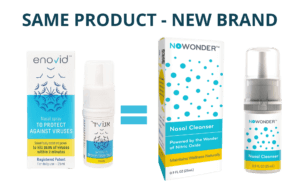 It has become increasingly clear that brain health is dependent on an adequate dietary supply of fatty acids. The brain is made up primarily of organic fats, comprising over sixty percent of its weight. Like any living organ, the brain relies on a continuous supply of the correct nutrients to maintain its structure, health, and function. The essential fatty acids (EFAs), or polyunsaturated fatty acids (PUFAs), are known as omega-3 fatty acids. They are the brain’s building blocks and omega-3 deficiency has been linked to the development of ADHD in people of all ages.
It has become increasingly clear that brain health is dependent on an adequate dietary supply of fatty acids. The brain is made up primarily of organic fats, comprising over sixty percent of its weight. Like any living organ, the brain relies on a continuous supply of the correct nutrients to maintain its structure, health, and function. The essential fatty acids (EFAs), or polyunsaturated fatty acids (PUFAs), are known as omega-3 fatty acids. They are the brain’s building blocks and omega-3 deficiency has been linked to the development of ADHD in people of all ages.
Looking deeper into how fatty acid deficiencies can affect the brain, several physical changes can happen if there are not enough EFAs being fed into the cognitive engine’s metabolism as a result of omega-3 deficiency in the diet. In brief, these can include:
- The degeneration of the outer shield that covers individual brain cells (neurons). This can disrupt communication between the billions of cells and affect various cognitive functions.
- Reduced levels of serotonin production. Serotonin is one of the essential neurotransmitters involved in message signaling.
- Malformation of dopamine receptors located at nerve synapses (the point at which signals pass from one nerve cell to another.) This has been associated with various neurological disorders, including Parkinson’s disease, schizophrenia, and attention-deficit hyperactivity disorder (ADHD).
- Reductions in the number of synapses affect the ability to pass messages along to other parts of the brain and into the body.
Every action in the brain relies on omega-3 fatty acids. Thinking, feeling, and acting all come directly from some work done by neurons that depend on PUFAs at every step.
Not all fatty acids are good for you.
The typical Western diet poses many challenges, particularly regarding the type and amount of essential fatty acids (EFAs.) Research has shown that humans evolved over thousands of generations with a roughly equal balance in the diet of approximately one-to-one between omega-3 and omega-6 fatty acids. Now, Western diets have shifted the ratio dramatically to the point where, on average, people consume 15 units of omega-6 for every one unit of omega-3. This is primarily due to consuming genetically engineered omega-6-rich seed oils, such as soybean, corn, and safflower oils. (Corn oil has a ratio of 60 to one, and safflower oil’s ratio is 77 to 1!).
Ultra-processed foods comprise many of the world’s calories, particularly in Western countries. In the UK alone, they account for over half of total energy intake.
The scientific journal Biomedicine and Pharmacotherapy advises that “a very high omega-6 to omega-3 ratio, as is found in today’s Western diets, promotes the pathogenesis of many diseases….whereas increased levels of omega-3 PUFA (in other words, a low omega-6 to omega-3 ratio) exert suppressive effects.” Genetically speaking, people today take in nutrition that differs substantially from that for which our genetic makeup was selected.
Why getting the right omega-3/omega-6 ratio is important.
While omega-6 fatty acids play a vital role in the body, too much of them can change how cells react and can harm the brain, heart, and blood vessels. Even in a diet with sufficient omega-3 EFAs, if they are being swamped by an oversupply of omega-6 fatty acids such as those in processed oils and fats, this will disrupt metabolism.
On the other hand, deficiencies in omega-3 fatty acids directly affect metabolism inside most cells and support interactions between cells. Because omega-3s are concentrated in high levels in cells in the brain and play essential roles in communications between nerve cells, even slight drops in availability can have a marked effect on cerebral functionality.
While it’s still unclear how DHA and EPA protect the brain, they are likely needed in the structure of the membranes of neurons. This comes back to the problem of over-supply of omega-6. When these are used instead of omega-3 in building nerve sheaths, neurons become unstable. As well, DHA and EPA have anti-inflammatory properties which are protecting the brain,
How does omega-3 deficiency contribute to ADHD?
It’s important to start by saying that while omega-3 fatty acids are vital for brain health and function, there has been no definite proof that an omega-3 deficiency causes ADHD. Still, the evidence suggests a strong link between the two. A few observations and studies offer clues:
- Some studies have shown that both adults and children with ADHD often have lower levels of omega-3 in their blood.
- Omega-3 EFAs, especially DHA, support cognitive function. A deficiency might exacerbate ADHD symptoms like inattention or impulsivity.
Why are we so dependent on fish as a source of omega-3 fatty acids?
Back when humans were evolving, freshly caught seafood was an essential component of the diet. From the very earliest stages of development, brain health was developed from components found in the sea and on rocky shores.
These essential fatty acids aren’t made in the body and must come from food. They are not readily accessible from the muscle tissue of land animals or from plants but are found in high levels in fresh ocean fish like salmon, mackerel, sardines, and tuna. The shift over the past ten thousand years to processed foods and meats has broken the supply chain vital to the proper functioning of the brain.
What is the best way to overcome omega-3 deficiency?
Restoring the supply of EPAs like eicosapentaenoic acid (EPA) and docosahexaenoic acid (DHA) when there are omega-3 deficiency can only be achieved by incorporating an adequate volume of the right fish into regular meals. Scientists say at least two to three meals of omega-3-rich ocean fish per week are necessary to keep up with routine bodily needs. If there’s already a deficiency in omega-3s, that would have to be increased to four or even five complete servings weekly.
The alternative to such a diet is to add supplements that supply the missing omega-3 fatty acids, especially DHA and EPA. One way is to directly take fish oil, krill oil, cod liver oil, or algal oil, but many people find this difficult and expensive. An alternative is to take a specially designed mixture of essential omega-3 fatty acids, in the proper ratio of DHA to EPA, together with components like L-tyrosine and Phosphatidylserine. These act to enhance the effectiveness of DHA and EPA. This means that a lower dosage of omega-3 works just as well as larger doses of fish oils and others. As a side benefit, the overall cost of a supplement like Zoomind is far lower than having to buy and prepare so many meals of ocean fish.








